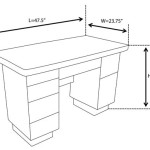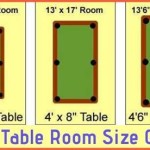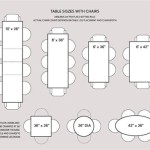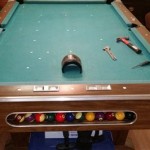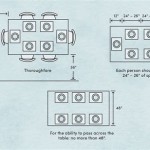Octagon Bumper Pool Table Rules: A Comprehensive Guide
Octagon bumper pool is a unique variant of pool played on a distinctive table. Unlike standard pool, it features an octagonal playing surface, strategic bumpers, and only two centrally located pockets. The objective remains similar – pocketing all of one's balls before the opponent. However, the unique table layout and specific rules contribute to a different and more challenging gameplay experience. This article details the rules governing octagon bumper pool, providing a comprehensive understanding of the game's mechanics and strategies.
The game is typically played with two players, each assigned a set of five balls. One player uses solid-colored balls (typically red), and the other uses striped balls (often white). A key element of the game is the placement of fifteen bumpers strategically positioned across the table. These bumpers significantly influence ball trajectories, demanding precise angles and carefully planned shots. The central pockets are often guarded by additional bumpers, adding to the difficulty of pocketing balls directly. The game combines elements of skill, strategy, and a touch of luck, making it an engaging and challenging pastime for players of all levels.
Initial Setup and Break Shot
The game begins with a specific setup. Each player places their five balls on designated spots, located near their respective sides of the octagon. These spots generally consist of a series of holes arranged in a predetermined pattern. The exact number and arrangement of holes varies depending on the specific table design. The balls must be placed in these holes before the start of the game. Correct ball placement is crucial for ensuring a fair and balanced start.
The break shot is a critical element of octagon bumper pool. The player initiating the break aims to pocket one of their balls into the center pocket on their side of the table. This shot must be executed with precision and power. If the break is successful and a ball is pocketed, the player continues their turn. However, if the break shot fails to pocket a ball, the opponent takes their turn. A failed break shot doesn't necessarily result in a penalty but it does grant the opposing player the advantage of starting their turn with a clear table.
A particularly important rule regarding the break shot involves hitting the center bumper. The break shot *must* make contact with the center bumper located near the center of the table. Failure to hit this bumper results in a foul. The penalty for this type of foul varies based on house rules, but it often involves the opponent having the option to reposition a ball or receive a free shot. The requirement to hit the center bumper adds another layer of complexity to the break shot, demanding careful calculation and controlled execution.
Playing the Game and Pocketing Balls
After the break, players take turns attempting to pocket their assigned balls into either of the two center pockets. A player's turn continues as long as they successfully pocket one of their balls. If a player pockets one of their balls, they get to shoot again. If they miss, the turn passes to the opponent. Pocketing the opponent’s ball does *not* result in a foul. Instead, the player continues their turn and the opponent's ball remains pocketed. Strategic pocketing of the opponent's balls is sometimes employed to reduce the opponent's options, although accidental pocketing is more common.
The bumpers play a significant role in the game. Players can use the bumpers to their advantage by bouncing the balls off them to achieve the desired angle for pocketing. Skillful use of the bumpers is a key differentiator between experienced and novice players. Understanding how the balls react to the bumpers at different angles and speeds is essential for strategic gameplay. Skilled players will often plan several shots ahead, considering the bank shots and bumper reflections that will lead to pocketing their balls.
Specific regulations govern the direction of shots. Generally, balls must be shot *away* from the player's starting area. This rule prevents players from simply tapping the ball directly into the pocket. It necessitates the use of bank shots and strategic maneuvering. Players must aim their shots towards the opposite side of the table, utilizing the bumpers and angles to navigate the playing field. This rule adds complexity and requires strategic planning of each shot.
Fouls and Penalties
Several actions are considered fouls in octagon bumper pool. As previously stated, failing to hit the center bumper on the break shot constitutes a foul. Another common foul is scratching, which occurs when the cue ball is pocketed. Additionally, moving the balls or bumpers intentionally or unintentionally, other than by striking the cue ball with the cue stick, is typically considered a foul. Jumping the ball off the table also constitutes a foul in most variations of the game.
The penalties for committing a foul can vary depending on the specific house rules or agreed-upon regulations. A common penalty is for the opponent to have the option of placing the cue ball anywhere on the table for their next shot. This provides a significant advantage to the non-fouling player, allowing them to strategically position the cue ball for a more favorable shot. Another possible penalty is for the violating player to reposition a ball from their pocket back onto the table on a designated spot. This helps restore the balance of the game and penalizes the player who committed the foul.
Repeated fouls may result in more severe penalties. Some variations include the loss of a game if a player accumulates a certain number of fouls. The precise number of fouls required for this penalty depends on local rules. Regardless, players should strive to avoid committing fouls to maintain their competitive advantage. Understanding the foul rules and their associated penalties is essential for playing the game responsibly and strategically.
Tactical considerations often revolve around avoiding fouls, even if it means passing up a potentially advantageous shot. The risk of giving the opponent a strategically placed cue ball or restoring a pocketed ball to the table often outweighs the potential gains from a risky shot. Therefore, smart gameplay involves a careful assessment of the risks and rewards associated with each shot, prioritizing the avoidance of fouls whenever possible.
In summary, the rules of octagon bumper pool encompass specific guidelines for setup, gameplay, pocketing balls, and penalties for fouls. Understanding these rules is crucial for successful gameplay and enjoying the unique challenges and strategic opportunities offered by this variant of pool.

Bumper Pool 101

How To Play Bumper Pool 7 Rules Beginners

Tito S Bumper Pool Tutorial

How To Play Bumper Pool

3 Ways To Play Bumper Pool Wikihow

Another Fun Around On The Bumper Pool With Octagon Table P Tiktok

How To Play Bumper Pool 7 Rules Beginners

Bumper Pool 101

How To Play Bumper Pool 7 Rules Beginners

The Underrated Game Room Table A Simple Guide To Bumper Pool For Fun

